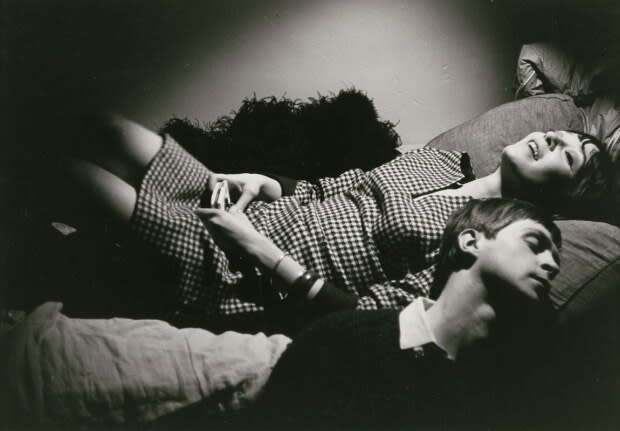How a Québécois filmmaker got John Coltrane to record the only soundtrack of his career
1964 was a busy year for for John Coltrane.
The saxophonist was in his prime, recording two albums that year with his now-famous Classic Quartet: Crescent and his magnum opus A Love Supreme.
That year he also worked on another project of less renown. It was the soundtrack for the Québécois film Le chat dans le sac, which was funded by the National Film Board (NFB).
It was written and directed by filmmaker Gilles Groulx, who was one of the first filmmakers in the province to take influence from the French new wave genre.
This forgotten piece of Coltrane's musical repertoire was mostly buried in the memories of those who had seen this underground art house film — until now.
Last week, the Coltrane estate announced plans to release the soundtrack as an album titled Blue World.
"It has been hiding in plain sight," said Ashley Kahn, a music historian and author who wrote the liner notes for the upcoming album, on CBC Montreal's Homerun.
On Sept. 27, the music will be available to a wider audience. But it has always been available in the archives of the National Film Board.

The soundtrack contains several Coltrane's classics, such as Naima and Village Blues.
Kahn says people assume the filmmaker took existing recordings to use for his own film. But Coltrane wrote and recorded versions of these songs exclusively for Groulx's film.
"If you want something young and hip and sophisticated, you use jazz," said Kahn.
Art house love story
The film is both a love story and a political statement.
It follows the dissolution of a love affair, serving as an allegory to the growing strain between Quebec and Canada at the time.
"And it's all to the music of jazz, and specifically John Coltrane," said Kahn.
"[He is] an unexpected voice to hear on the soundtrack."
Getting Coltrane to do the soundtrack for a small Québécois film was no easy feat.
He was a coveted voice in jazz. Kahn said Groulx was a big fan of Coltrane's music, having a personal collection of his records.
She said that getting Coltrane to score the film was imperative for his artistic vision.
"[It took] a little bit of luck and a little bit of chutzpah," said Kahn.

Groulx knew a woman based in Montreal that knew Coltrane's bassist, Jimmy Garrison. Through Garrison, Groulx got in touch with Coltrane and convinced him to do the soundtrack.
"And John said, 'let's work it out,'" said Kahn.
Both Coltrane and Groulx decided they wanted this to be done independently of his record company to avoid the bureaucracy that would come with it.
They made an arrangement, organized through Coltrane's lawyer, where Groulx agreed to pay for the recording session, the band and the permission to use Coltrane's original compositions.
So Groulx travelled from Montreal to New York to pay Coltrane for his music, with cash supplied by the NFB.
Given the technology of the 1960s, Coltrane was unable to see any version of Le chat dans le sac before recording the music for it. The writing process involved a collaboration between filmmaker and musician where they discussed the feel of the film.
Kahn said the recording session took place on an afternoon in June 1964 in a studio in New Jersey with Groulx himself in attendance.
He returned to Montreal with the tapes, and his film premiered August of that year.
For many jazz enthusiasts, including Kahn, the rediscovery of these recordings provides an invaluable opportunity to dive into the mind of Coltrane as he revisited these songs for Groulx's soundtrack.
"To be able to now compare a '64 version of Village Blues or Traneing In … with what he has done previously a few years before, it's a rare thing," said Kahn.
"Coltrane was much like Miles [Davis], he was always plowing forward," said Kahn. "[He] put himself in musical situations that carried him forward."
Listen to the soundtrack's title track below:


